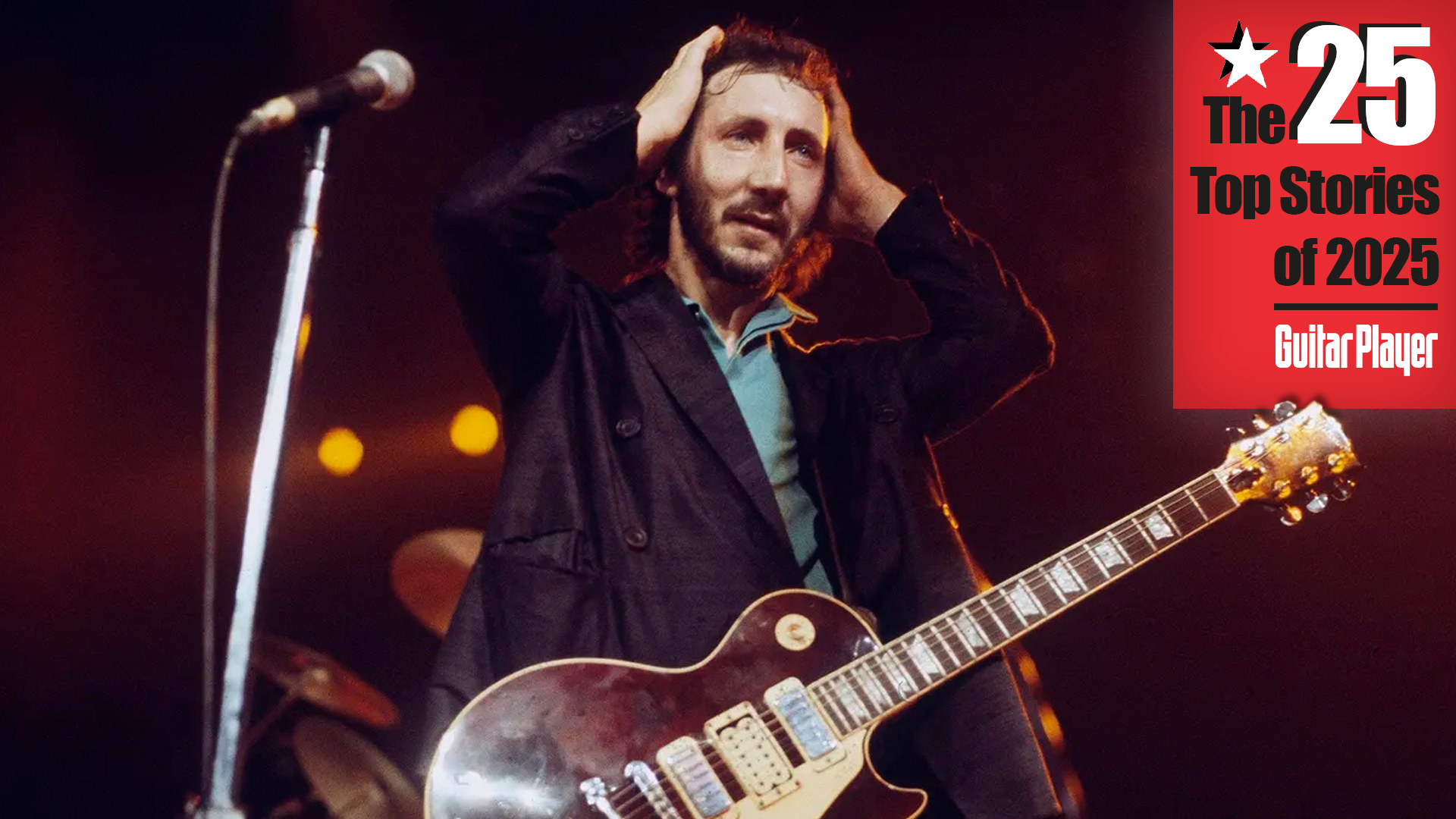“Me and Pete Townshend had a rivalry to see who could get the loudest. We kept pushing Jim Marshall to make amps with more watts and volume controls that went up to 12!” Ronnie Wood on the early days of Marshall, and his loudness war with the Who
Alongside many other budding British guitar heroes of mid-'60s London, Wood – via Marshall – consistently pushed the boundaries of amplification

Though often overshadowed by other electric guitar greats that got their start in London in the mid-'60s – your Jeff Becks, Jimmy Pages, and Eric Claptons – Ronnie Wood was right there with them, coming to notice via his guitar work with the Birds (not the Byrds).
Wood's diaries of that formative time, published in 2015 as How Can It Be? A Rock and Roll Diary, make it clear just how enmeshed in the booming London scene he was. One entry – featured in a 2015 Guitar Aficionado article – read “Discovered first second-hand news about Eric leaving Yardbirds.” Dated February 24, 1965, it shows that Wood heard about Clapton's departure from the popular group weeks before it was known to the general public.
Among other fascinating windows into that time, How Can It Be? also features anecdotes about the early days of Marshall, and how it transformed from humble beginnings into perhaps the most iconic guitar amp manufacturer of all time.
Alongside the aforementioned budding British guitar heroes of the day, Wood – via Marshall – was pushing the boundaries of amplification. “Me and Pete Townshend had a sort of rivalry back then to see who could get the loudest,” Wood told Guitar Aficionado in 2015. “We kept on pushing Jim Marshall to make amps with more watts and volume controls that went up to 12!”
In another 1965 entry, Wood takes note of receiving a 100-watt head and 8×12 speaker cabinet from the Marshall shop. Significantly, Wood later claimed that he was the first to suggest a cabinet with eight speakers to Jim Marshall, and was subsequently the first to receive one.
“Pete Townshend came in [to the shop] and went, ‘You bastard!’” Wood later wryly noted.
Though they never reached the commercial heights or influence of some of their contemporaries – the Who, the Rolling Stones, the Small Faces, and the Yardbirds, for instance – the Birds were well-respected, and indeed, Wood garnered enough of a reputation with his playing to later join the Small Faces' successor group, the Faces, and the Stones, of whom he remains a member to this day.
All the latest guitar news, interviews, lessons, reviews, deals and more, direct to your inbox!
“The Birds were very busy and trying to get better all the time,” Wood told Guitar Aficionado. “We’d gather in the gig wagon and off we’d go to play shows almost every night of the week. I kept my journal to sum up how the audiences were, how we played, and how much money we made. It was a sliding scale that kept rising. We went from making 50 pounds to 75 pounds to 100 pounds.
“We always would compare what we were making to the Stones, who were making 250 pounds a night back then. We kept going, ‘We’re getting there!’”

Jackson is an Associate Editor at GuitarWorld.com and GuitarPlayer.com. He’s been writing and editing stories about new gear, technique and guitar-driven music both old and new since 2014, and has also written extensively on the same topics for Guitar Player. Elsewhere, his album reviews and essays have appeared in Louder and Unrecorded. Though open to music of all kinds, his greatest love has always been indie, and everything that falls under its massive umbrella. To that end, you can find him on Twitter crowing about whatever great new guitar band you need to drop everything to hear right now.
